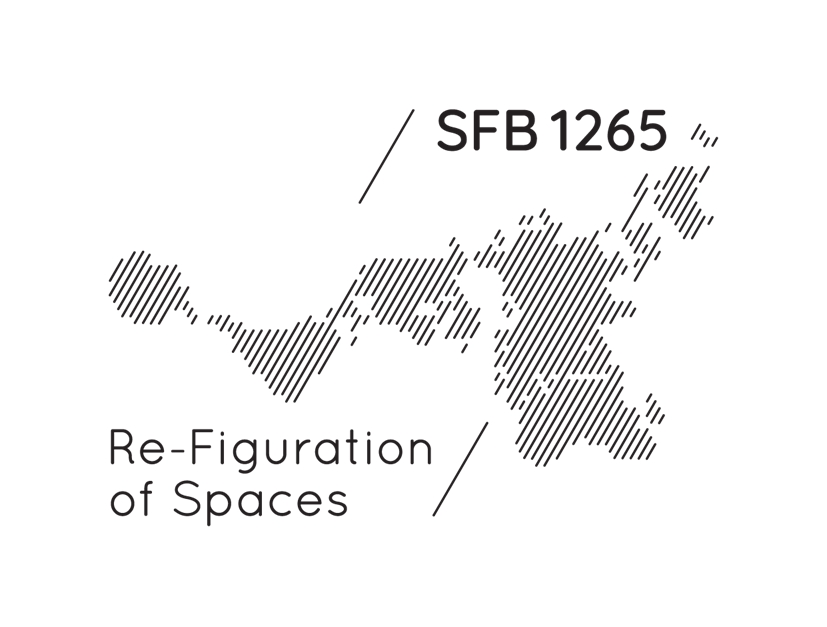Digital Urban Planning: Planning Practices and Physical Arrangements
Research department: Economy and Civil Society
Project Leader within IRS: Prof. Dr. Gabriela Christmann
Project Team: Sophie Mélix Martin Schinagl
Consortium: Berlin University of Technology (Coordination) Leibniz Institute for Research on Society and Space Free University of Berlin Humboldt University of Berlin University of Münster
Funding Organization: Deutsche Forschungsgemeinschaft
Duration: 03/2018 - 12/2021
“Re-Figuration of Spaces” is the first sociology-led Collaborative Research Centre (CRC) to be funded by the German Research Foundation. It aims to investigate the comprehensive spatial reorganisation of global scale that has been caused by an increase in the global circulation of people and goods, the development and dissemination of digital communications technologies, and the thus entailed growth of worldwide interconnections. Prof. Dr. Gabriela Christmann of the IRS was involved in the CRC as a member of the management board and as spokesperson for Project Area B, “Spaces of Communication”, and led the sub-project “Digital Urban Planning: Planning Practices and Physical Arrangements”.
In the last 50 years, global processes of social, political, and technological change have intensified considerably. This finds expression worldwide in an increase in interrelationships, connectivity, and dependencies. There has been a sudden rise in the circulation of goods and ideas, just as there has been in the mobility and migration of people. Social processes such as the exchange of knowledge have received completely new characteristics and implications through the use of transportable communications technologies. At the same time, countermovements to globalisation have received significant support, as epitomised in the United Kingdom's Brexit vote or the trend towards regionalisation in the food sector. The initial thesis of the CRC “Re-Figuration of Spaces” is that, through these fundamental processes of societal change, the relationship people have with their spaces requires renegotiation, alteration, and adaption. Such spaces count as organising elements in social processes, while at the same time acting as venues for social conflict and transformation. They are also a resource in development processes.
The aim of this new CRC was to empirically investigate these complex socio-spatial processes in a broad spectrum of disciplines: sociology, geography, architecture, media and communication studies, art, and planning. Out of this, a theory of the present transformation of the social order as a spatial-communicative re-figuration will be developed.
With the sub-project “Digital Urban Planning: Planning Practices and Physical Arrangements”, the IRS provided a contribution to the project area “Spaces of Communication”, which investigated transformations in communicative action resulting from mediatisation processes, along with their implications for the re-figuration of space. The aim of the sub-project was to especially research transformations in urban planning worldwide, using the example of new digital technologies and communication media.
Three questions were at the core of the research:
(i) How can digitisation in urban planning since the 1970s be described and systematised?
(ii) How does urban planning practice change against the backdrop of digitisation processes, and what spatial constitutions of planning accompany such changes?
(iii) How are the material and physical arrangements of urban development changed on the basis of digital planning in relation to arrangements (comparing analogous plans) of the 1960s?
Three intermeshed areas of action were taken into account for digital planning practice: urban structural planning, especially work undertaken with geographical information systems (GIS) for the processing of diverse information; urban design planning, in particular work with tools such as computer-aided design (CAD); and the communicative planning for the participation of stakeholders and citizens, for example with 2D- or 3D-simulation tools. Mediatisation processes were investigated using the examples of four cities on four continents: New York City (North America/USA), Lagos (Africa/Nigeria), Songdo (Asia/South Korea) and Frankfurt/Main (Europe/Germany).
Located at the Technische Universität Berlin, the CRC is led by Prof. Dr. Martina Löw (Department of Sociology, Faculty for Sociology of Planning and Architecture) and Prof. Dr. Hubert Knoblauch (Department of Sociology, Faculty for General Sociology) as spokespersons. Also involved in the successful application are the Departments for Architecture and Urban and Regional Planning at TU Berlin, the Department for Media and Communication Studies at the FU Berlin, the Departments for Social Sciences and Geography at HU Berlin, the Department of Communication at the University of Münster, and the Leibniz Institute for Research on Society and Space (IRS).
Photo © TU Berlin


